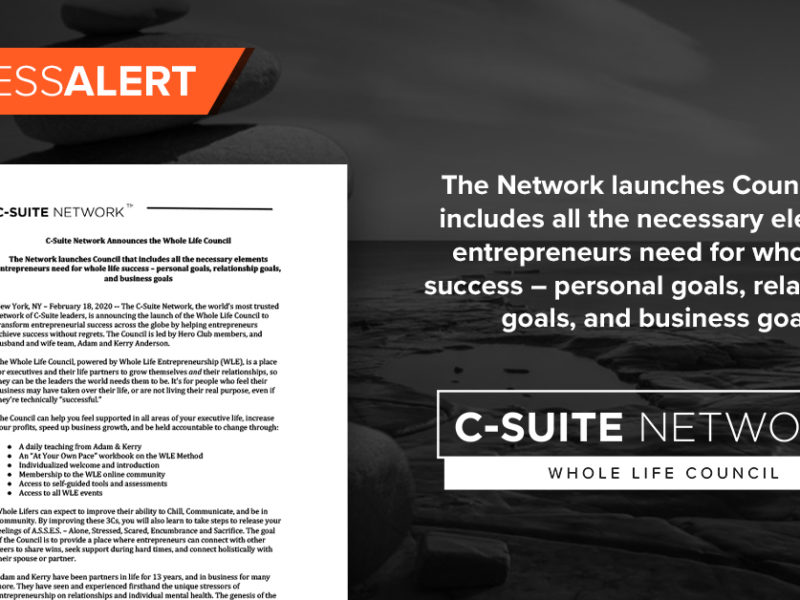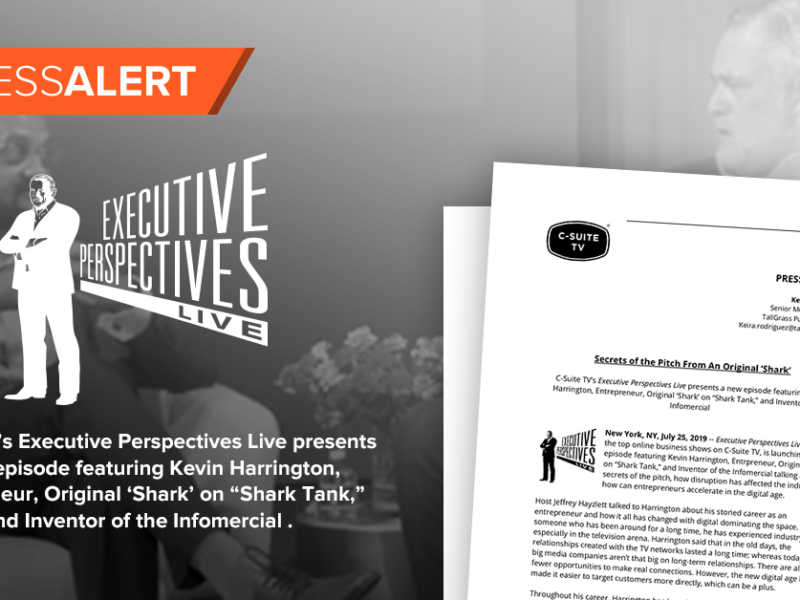
You’ve Reached the Top! Now What?
You’ve Reached the Top! Now What? https://csuiteold.c-suitenetwork.com/wp-content/uploads/2015/07/The-Top-1024x589.png 1024 589 C-Suite Network https://csuiteold.c-suitenetwork.com/wp-content/uploads/2015/07/The-Top-1024x589.pngby Judith Glaser

You’ve Reached the Top! Now What?
Is entrepreneurship the only way forward once you achieve success?
Starting a business from scratch is different from stepping in and adding value to an existing company. Entrepreneurs love the challenges, risks, and thrills of doing what others have not done—envisioning new horizons, exploring the unknown, moving to the next peak and eventually reaching the top.
So, why do so many ambitious and talented executives and entrepreneurs plateau, burn out, and at times regress once they “reach the top” of whatever ladder, mountain or organizational structure they’ve been climbing?
My answer, based on both research and reflection, is that while they tend to be great talkers (because they continually pitch their visions, strategies, products and services to investors, banks, employees, customers, clients, and partners), they may plateau when it comes to connecting deeply with others.
Reaching the summit today requires us to develop a new perspective and paradigm of leadership and to climb two peaks: 1) creating and selling the vision, and 2) connecting with other people as we build the business around our innovative ideas. Connecting with others enables us to build concentric circles of engagement with employees and customers to expand the brand in magnificent and exciting ways. Entrepreneurs who put relationships before tasks and build bridges for connection become multipliers of the DNA for entrepreneurship—a powerful path for getting to the next level of greatness.
Expand Your Connecting Profile
With the right digital tools, we can now connect 24/7 from anywhere in the world at any time, but it’s not enough to have the tools to connect. We also need the wisdom to connect. We need Conversational Intelligence® (C-IQ), a framework for knowing which conversations trigger our lower-level brain activity, such as primitive instincts for fight, flight, freeze and appeasement, versus what sparks higher-level brain activity, such as trust, integrity, strategic thinking, empathy, and capability to process complex situations. The more we see how much of our brain is devoted to social connection, the more we realize how connecting with others in healthy and productive ways becomes vital for our mutual success in teams and organizations.
Problem: What Inhibits Healthy Connections?
Here are four behaviors that often inhibit healthy connections:
- Having communication blind spots. Sadly, I see many leaders bomb in critical meetings and situations because of low C-IQ: they don’t speak to influence and thus fail to connect. C-IQ is a rating of the level of trust we create with others and the quality of our interactions. People with high C-IQ activate their audience’s prefrontal cortex, a section of the brain that enables trust and good judgment. People with low C-IQ engage the lower brain, where fear and distrust reside. High C-IQ correlates with business turnarounds and sustained success.
- Talking Past Each Other. Breakdowns happen when people talk past each other, not with each other. Once you recognize your conversational blind spots, you can boost your C-IQ by identifying what is going wrong in conversations and situations and flip the switch in your brain and others’ brains to get communications back on a productive and neural path.
- Not Seeing Beyond Your Vision. The tough road of leadership and entrepreneurship demands total belief in the enterprise and it’s vision. It’s an invigorating emotional state with a natural dopamine high. Unfortunately, having total belief can blind you to the need to see beyond your vision and gain buy-in from diverse constituents, or listen to their push back if they don’t at first agree.
- Not Minding the Gap. To bridge blind spots, you need to mind the gap and step into your conversation partner’s world, shift from talking about yourself and your solutions, and start co-creating by focusing on shared success. This involves identifying what the people in the loop want from you. For example, if you are presenting a business plan to venture capitalists, you should focus on how the plan generates revenue, since their objective is ROI.
Solution: Co-creating Conversations®
Co-creating conversations enable you to co-create the future. This is not about a quick fix or a new policy, lecturing or tell–sell–yell: it’s about navigating with others in and out of scenarios from many perspectives. Such conversations create healthy practices and rituals for how work gets done inside the culture. They enable us to create a movie screen on which to project scenarios for the future so we can explore them and choose the best paths.
As we understand others’ perspectives, we can form a WE-centric rather than an I-centric view of the future. As we create the conversational space for change, we reduce fears and threats and help people find their place in the change process. We can then breathe in a coherent, collaborative way. To breathe means to aspire. When we are calm and connected to others during change, our aspirations become greater and our capabilities increase.
Apply these tips for fostering a higher C-IQ in four specific situations:
- When you meet someone new. Say, “I’m so glad I met you!” Or “You look familiar!” Our brains are designed to be social. The need to belong is more powerful than the need for safety. Feeling rejected activates our fear networks and increases the level of cortisol, which moves us into protective behaviors. A sense of inclusion reduces protective cortisol levels while increasing oxytocin and promoting bonding.
- When you brainstorm with a diverse group. Appreciate others’ contributions, comment on how their idea has helped you, and let them know how much you appreciate their thinking. Appreciation reshapes our neural networks. When we appreciate others’ gifts, we have a positive impact on their neural networks. Appreciation activates a larger framework of neurons in our brain that enables higher levels of seeing, hearing, and thinking broader and bigger. Reaching out to connect and appreciate others’ perspectives, even if you don’t agree, elevates trust, or feeling like a friend, thus creating a larger framework for thinking together.
- When you want to persuade someone. Put yourself in your listener’s shoes. Empathy activates the mirror neuron network located in the prefrontal cortex or Executive Brain. When we mirror each other, we can see and experience the world through each other’s eyes. This activates higher oxytocin production, which facilitates bonding, collaboration and co-creation and elevates trust and openness. We become comfortable sharing what is really on our minds.
- When you need to solve a difficult problem. Say, “Tell me your thoughts.” And listen to connect. When we are uncertain, both the distrust and trust networks are activated at the same time. We more easily fall into groupthink to be safe in the crowd, or we close up for fear we will look weak. Make it safe to be transparent about what you are uncertain about. Don’t penalize those who speak up – encourage them to share.
C-IQ is the ability to master the power of connection to enhance your relationships and gain better business and personal results. Even when you think you’ve reached the top, you face yet another mountain to climb – engaging a broader audience of potential partners – both inside and outside the company. When you boost your C-IQ, you become smarter at navigating your social highway. C-IQ is not about how smart you are, but how open you are to learning effective conversational rituals that prime the brain for trust, partnership, and mutual success.
 Judith E. Glaser is the CEO of Benchmark Communications, Inc. and the Chairman of The Creating WE Institute. She is the author of the best selling book, “Conversational Intelligence” (Bibliomotion, 2013), an Organizational Anthropologist and a consultant to Fortune 500 companies.Visit her at creatingwe.com; conversationalintelligence.com or contact her at jeglaser@creatingwe.com. Follow Judith on Twitter @CreatingWE or connect with her on Facebook.
Judith E. Glaser is the CEO of Benchmark Communications, Inc. and the Chairman of The Creating WE Institute. She is the author of the best selling book, “Conversational Intelligence” (Bibliomotion, 2013), an Organizational Anthropologist and a consultant to Fortune 500 companies.Visit her at creatingwe.com; conversationalintelligence.com or contact her at jeglaser@creatingwe.com. Follow Judith on Twitter @CreatingWE or connect with her on Facebook.




